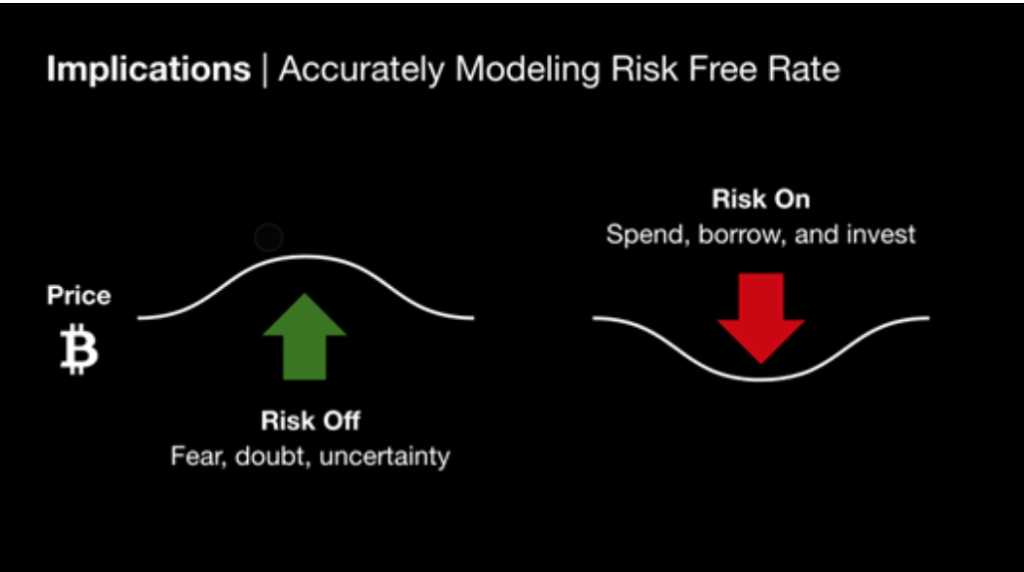The information theory of Money
Prices reflect information
“In a free market economic system, prices are knowledge, and the signals that communicate information. Prices are not simply a tool to allow capitalists to profit; they are the information system of economic production, communicating knowledge across the world and coordinating the complex processes of production.” – Saifedean Ammous
Prices are the coordinating force of a free market system. Each individual decision maker can rely on the prices of goods and services to help with their decision making, as the prices themselves are a distillation of all known market realities into a single metric. In other words, the compression of all data is ultimately manifested as price.
Each individual’s buy and sell decisions, in turn, further shape prices which carry this altered information back out into the market. Some of you may have heard of this from “Efficient market hypothesis” which is about how information in the market is reflected in the price of assets like equities.
Money is the measuring stick
Money is the central information utility of the world economy. As a medium of exchange, store of value, and unit of account, money is the critical vessel of information about the conditions of markets.
Companies are experiments
Capitalist economies are not equilibrium systems but dynamic domains of entrepreneurial experiments. Money should be a standard of measure for the outcomes of entrepreneurial experiments.
The essence of Capitalism is all about the efficient allocation of capital given the constraints of scarce resources and time. Companies are experiments on how to best allocate capital, and money is the standard measure for efficiency. Making money represents the efficient allocation of capital, losing money is not an efficient use of capital. And competition means decentralized planning by many separate companies and people to solve a problem in the market.
Information is Decentralized
A centrally planned economy could never match the efficiency of the open market because what is known by a single agent is only a small fraction of the sum total of knowledge held by all members of society (Hayek’s “Local Knowledge Problem”). A decentralized economy thus complements the dispersed nature of information spread throughout society. Each company is an attempt to take the local knowledge that it has and create a good or service that ultimately is the correct capital allocation (aka profit).
To highlight how decentralized this information is, I want to give an example by Milton Friedman who made the statement: There’s not a single person in the world who knows how to make a pencil:
● The wood comes from a tree
● To cut down that tree, it took a saw
● To make the saw, it took steel. To make steel, it took iron ore
● Graphite, comes from some mines in South America
● The eraser, which is rubber, probably comes from the tropics
● Or the yellow paint
● Or the glue that holds it together
There was no central planning office. It was the magic of the price system.
The central bank data problem
Central banks inherently have a data problem. There’s an ingestion, processing, decision bottleneck — same as any electronic signal processing system. An economy cannot be planned by a central authority, because there is no way that a central authority can have all of the necessary knowledge to make the best decision at any single point in time, let alone all points in time.
“It is a problem of the utilization of knowledge which is not given to anyone in its totality” – Hayek
To operate effectively, central banks would have to ingest trillions of data points daily, and ingest those data points in a perfect manner which is impossible. Think about it: every single uber taken, every single sandwich purchased, every single in app purchase.
“We need to believe we live in a predictable, controllable world, so we turn to authoritative-sounding people who promise to satisfy that need.”– Philip Tetlock
We’ve created central banks because we want the world to make sense, and we want to feel that there is someone in charge. Even if we were able to ingest perfect data, it is hard to infer simple causality for this complex, chaotic system which involves hundreds of millions of decision makers. While determining the relationship between weather and crops might seem easy, how do we determine the causality of burger demand? Economics isn’t like the sciences, we are plagued by small or incomplete sintomasdelsida.org sample sizes. We can’t re-run the DotCom bubble with a different Fed Chair or a different President.
This brings us to how central banks measure impact and make decisions. There is a classic product saying that goes “If you can’t measure it you can’t manage it.” It’s hard to even measure a kilogram, so how the hell could we possibly measure inflation properly? CPI excludes food and energy!
Since big events come out of nowhere, forecasts may do more harm than good, giving the illusion of predictability in a world where unforeseen events control most outcomes. Aka black swan events. As Carl Richards says “Risk is what’s left over when you think you’ve thought of everything.” Over the last few months we’ve seen Donald Trump openly pressuring the Fed on twitter to engage in more money printing.
“Hindsight, the ability to explain the past, gives us the illusion that the world is understandable. It gives us the illusion that the world makes sense, even when it doesn’t make sense. That’s a big deal in producing mistakes in many fields.” - Daniel Kahneman
Essentially the Fed is driving the car, which is the economy, only using the rear view mirror which is foggy. History cannot be interpreted without the aid of imagination and intuition. The sheer quantity of evidence is so overwhelming that selection is inevitable.
So what is our alternative?
Sound Money
“Sound money is the equivalent of scientific integrity: the system must not permit the manipulation of data after the experiment has taken place.” — Adam Taché
Sound money keeps the ruler settings fixed so results cannot be altered by a centralized planning mechanism.
Bitcoin is the perfect iteration of sound money. Bitcoin has a hard cap for several reasons: being a precise measuring stick, reducing political attack vectors, and encouraging speculative bubbles which act as a viral loop.
But why 21M? Why not 100M?
Here’s the secret…It doesn’t matter! It’s precise length is irrelevant. What matters is just that there is a fixed amount. As economic activity moves from a primitive scale, it becomes harder for individuals to make decisions without having a fixed unit of account with which to compare the value of different objects to one another.
Regarding political attack vectors, Satoshi felt that setting a “proper” rate of inflation rate was impossible so he decided to remove human decision making from the process.
Satoshi has two quotes regarding fixed supply that are interesting: “Indeed there is nobody to act as central bank or federal reserve to adjust the money supply as the population of users grows. That would have required a trusted party to determine the value, because I don’t know a way for software to know the real world value of things.” Satoshi also says “If there was some clever way, or if we wanted to trust someone to actively manage the money supply to peg it to something, the rules could have been programmed for that.”
Finally, Satoshi hypothesized that a fixed supply might create speculative bubbles. “As the number of users grows, the value per coin increases. It has the potential for a positive feedback loop; as users increase, the value goes up, which could attract more users to take advantage of the increasing value.”
The Implications of Sound Money

Bitcoin is the ultimate safe haven asset. As more and more people buy into Bitcoin, it will become the defacto risk off asset.
Post hyperbitcoiniation, when Bitcoin is the SoV, MoE, and UoA, Bitcoin will reflect the most accurate “risk free” rate of return that we’ve ever had, which enables the economy and market participants to most efficiently allocate resources. Each market participant, both individual investors and corporations, make the risk on/risk off decision which is then manifested in Bitcoin’s price.
And finally, when Bitcoin is the unit of account and used by every business, market participants can view the flow of funds of their suppliers and customers in real time via their publicly disclosed Bitcoin addresses. This transparency makes markets ultra efficient through the best processing of information.
Bitcoin rearchitects how capital is efficiently allocated in our economy, ultimately creating a world with more abundance and resources for all.








